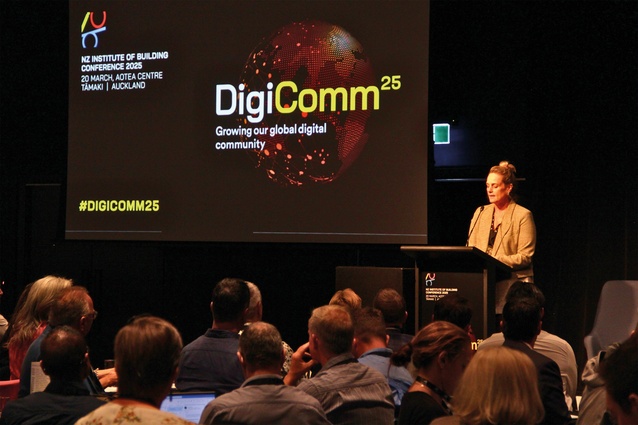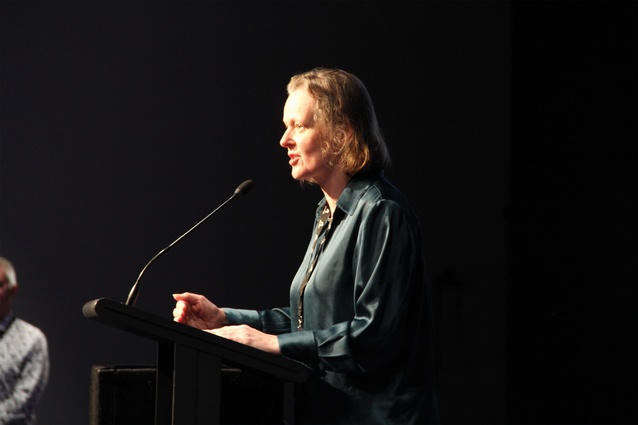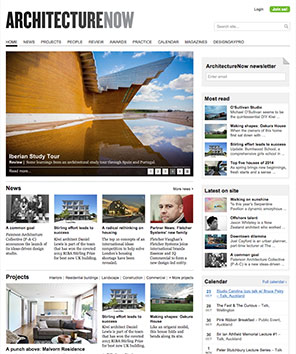Working with technology
Terry Cheng attended DigiComm25 and came away cautiously optimistic about the role of emerging technologies in enabling more-meaningful work.
DigiComm25, hosted by the New Zealand Institute of Building in March, was a challenge to the status quo.
The conference acknowledged that building in Aotearoa New Zealand was no longer naïve but part of the international debate. In the imagination of the social consciousness, things offshore were so far away for island nations because of scale, economy and population size. Today, being far, far away isn’t so isolating. Architects can essentially draw the same-looking drawings from the same software packages, regardless of where they live in the world.1
The speakers spoke of the promise of BIM — how it helps with clear design communication and, therefore, better-coordinated buildings because digital twins represent a single source of truth. They explained that it all boiled down to better design outcomes, whatever that entailed in the imagination of architecture.
Where capital is God, US-based Nate Helbach of Neutral showed their work on multistorey housing with mass timber, and rigorous sustainability certification, delivered by prefabrication and BIM. In Aotearoa, there were questions concerning the financial viability of BIM for small-scale projects. In rebuttal, others hoped that, as towns and cities mature, so, too, would the uptake of appropriate tools that pay off in the long term. After all, the rigour of the digital model is increasingly relevant in a world where New Zealand architecture is looking offshore to benchmark its design quality.
Amongst round-table discussions, many wondered how artificial intelligence would affect creative agency, quality assurance and intellectual property. Would architecture become one homogenous blob of probabilities — a statistically monotonous greyness supercharged by an algorithm that squeezes out any last humane quality in pursuit of a slick efficiency?
Shaolei Ren from the University of California showed the sobering story of the environmental cost of AI, particularly its carbon emissions and water consumption by data centres. Ren’s findings called for an awareness of moderated AI usage, sharpened by the climate crisis and the Paris Agreement.
Justin Flitter of AI New Zealand took to the stage to advocate for large language models in ways that empower people to do more-meaningful work and remain competitive in an increasingly automated field. Stirring possibilities were laid out to those who could only imagine what AI could do in their lifetimes.
As described in The Social Dilemma from the Center for Humane Technology, one had to look only at social media and the loss of control in the debate over fake news and misinformation.2 In an age of AI-driven algorithms, what room is left for the interest of the imaginative individual? Who has access to your data? And why do they want your data?
If, indeed, ‘naïve’ notions of New Zealand architecture are morally compromised, then an international outlook could help serve to address the issues of today. Steeped in tradition, however, the local condition is still concerned about the pragmatics: a residual attitude born out of necessity. The ‘snakes’ and ‘snakeskins’ that Mark Wigley alluded to in his 1986 essay3 are possibly the strands of submarine fibre optic cables in the South Pacific that connect island nations to the rest of the world.
In a moral panic, DigiComm25 left one cautiously optimistic, if not hopeful, about the future of the elegant shed. A climate crisis is up against big technological changes for better or worse. The future is hard to tell.
Amid rich discourse, perhaps the event organisers had the foresight to tap into the wisdom of the mātātahi young professionals workshop. Here’s what our digital natives had to say: We value the wisdom of a multigenerational industry. We want to do good for the world.4
References
1 Sean Godsell, 2019, Sean Godsell: Houses. UK: Thames & Hudson, p. 7.
2 Jeff Orlowski, 2020, The Social Dilemma. US: Netflix.
3 Mark Wigley, 1986, Paradise Lost and Found, in Douglas Lloyd Jenkins (ed.), 2005, New Dreamland: Writing New Zealand Architecture. Auckland: Godwit, p. 283.
4 New Zealand Institute of Building, 2025, DigiComm25.












